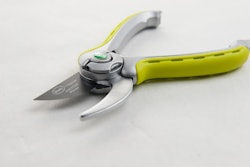
You know who a lawn’s enemies are: invasive crabgrass, creeping ground ivy, and clover, disguised as innocent little flowers.
These plants (and others like them) are sneaky, tenacious foes that take hold of a green lawn seemingly overnight. Even one dandelion plant can wreak havoc: each plant produces as many as 15,000 seeds, each of which can survive six years in the soil.
Weeds aren’t easily eradicated, but they can be conquered with patience and planning. You can’t just pull up weeds and call it a day. To fight the enemies invading a lawn and to keep them at bay, you need a battle plan.
Step 1: ID the enemies. You can’t fight what you don’t know. Use a weed identification guide to figure out how to stop weeds in their tracks. Individual weeds thrive under different conditions, and provide clues to problems in a lawn. Ground ivy, for example, spreads in shady sections of the lawn with damp soil. Once you’ve identified this particular pest, you’ll know that you can fight it by improving soil drainage and pruning trees to allow more sunlight to that section of lawn.
By knowing which weed you’re battling, you can target them in the most effective way (like mowing annual weeds before they flower) and avoid making costly mistakes (like inadvertently spreading weeds by breaking up bulbs by pulling, rather than digging).
Step 2: Feed a lawn. A healthy lawn will crowd out weeds. Fertilizer is a great tool, but you need to make sure you’re using the right amount. Too little and a lawn may not thrive, allowing space for invaders. Too much and you might be feeding the very weeds you want to kill. Follow fertilizing guidelines for the type of grass grown, and provide a slow steady supply of nutrients by using a fertilizer with a high percentage of controlled-release nitrogen.
Step 3: Water infrequently and deeply. Soak the lawn with about an inch of water once a week to encourage grass to grow deep roots while keeping weeds thirsty.
Step 4: Set the mower high. When plants compete for light, whichever plant is taller wins. Not only does the taller plant get more sun, it shades shorter plants, making them weaker.
Also, grass needs its leaves to provide nutrients to the roots. The longer the blades, the better the plant can create the photosynthesis that feeds it. Find out the recommended range of mowing heights for a particular type of grass, and go with the highest level.
Step 5: Tackle any invaders carefully. Even a healthy lawn gets weeds. Pull them up. Mow them down. Dig them up. Once you’ve identified your enemies (see Step 1), you’ll know which tactic to use. Use herbicides as a last resort: they can harm or kill ornamental plants.
By Garrett Bremer, owner of Classic Green











